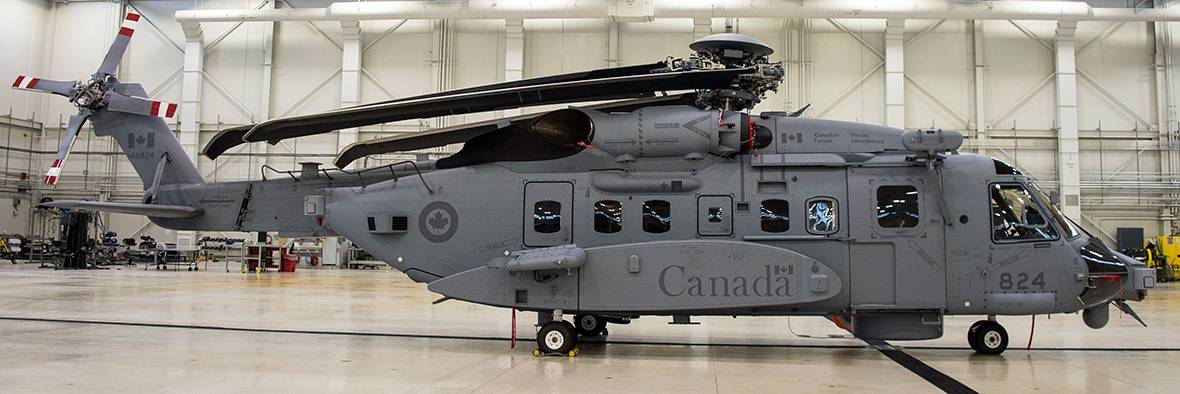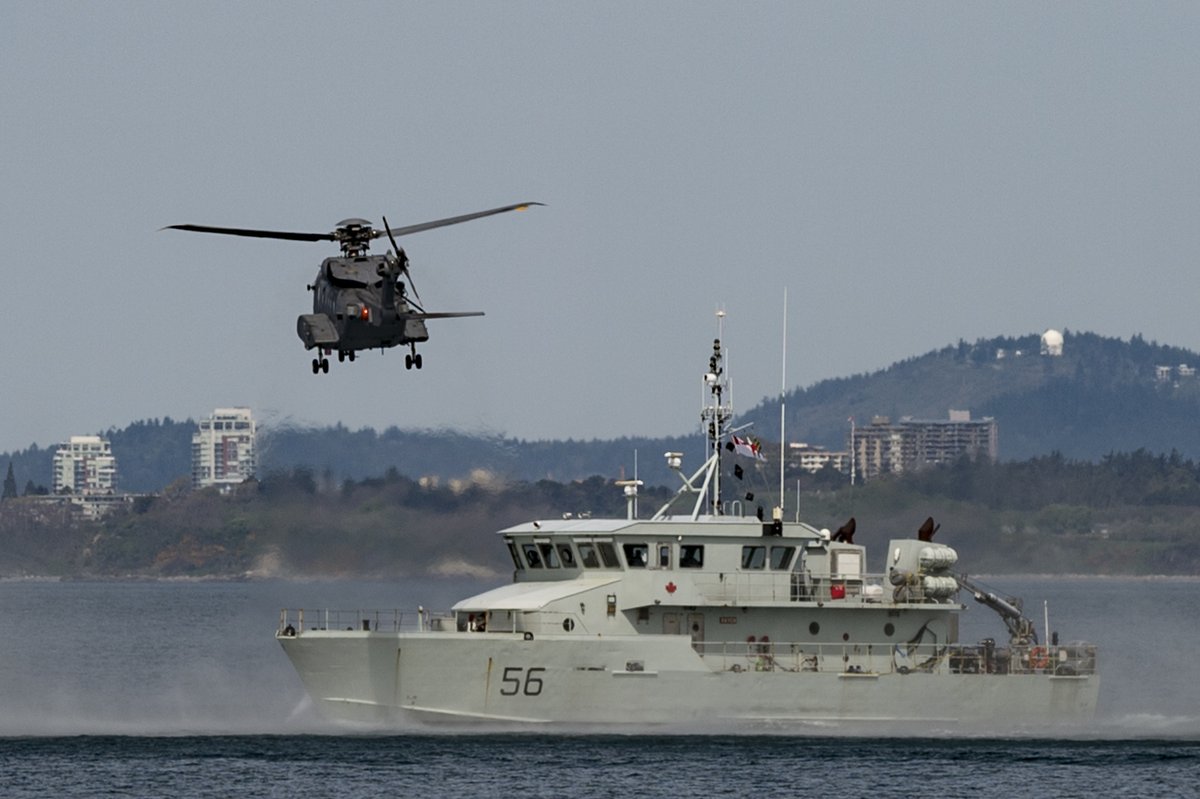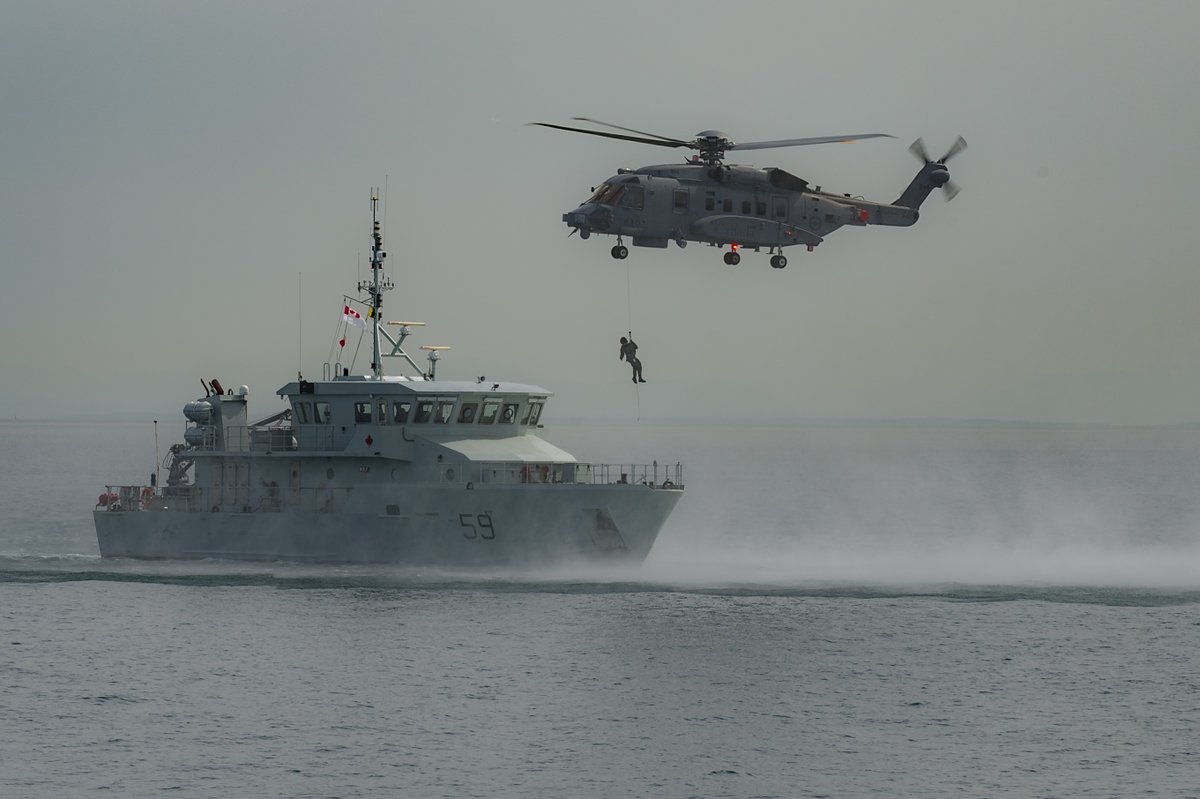Article Link
CH-148 Cyclones Significantly Expand Surveillance Area, RCAF Says
The Royal Canadian Air Force (RCAF) CH-148 Cyclones by Sikorsky significantly improve upon the surveillance area of the Sikorsky CH-124 Sea Kings, which the RCAF retired late last year, according to RCAF Col. Sid Connor, commander of 12 Wing in Shearwater, Nova Scotia.
"We can see 10 times farther underwater, and the Cyclone's radar and ESM (electronic warfare support measures) capabilities give us a chance to do above water surveillance 10 times greater than before," he said. "The Cyclone can identify contacts for the ship captain. On any given flight, the area you are able to pick up, whether that's identifying narcotics trafficking or unidentified smaller vessels, is 10 times greater, or 100 times as much area."
Two Cyclones are deployed — one aboard the Royal Canadian Navy's Halifax-class frigate, HMCS Regina, in the Middle East, to support Operation Artemis, the Canadian portion of CTF 150 — a multi-nation effort to battle terrorists and illicit flows of drugs, weapons, and people. The other deployed CH-148 is aboard the HMCS Toronto, in the Black Sea in support of Operation Reassurance — the Canadian contingent of NATO European deterrence efforts in Central and Eastern Europe.
In February, the Royal Canadian Navy accepted delivery of the 17th CH-148 of a planned acquisition of 28 by 2021 to replace the venerable Sea King anti-submarine warfare helicopters.
The February delivery marked the ninth CH-148 Block 2 aircraft in the field. The Royal Canadian Navy has accepted two Block 2 Cyclones and seven upgrades of 15 Block 1 Cyclones to the Block 2 configuration. Sikorsky has four of those 17 CH-148s and is upgrading them to Block 2 configuration.
Block 2 Cyclones include situational awareness enhancements, an upgraded Northrop Grumman AN/AAR-47(V)2 missile approach warning system, avionics upgrades, and sea state 6 capability.
In addition, operational tests of Block 2.1 are to begin late next year with the possible delivery of the first CH-148 with Block 2.1 in 2021. Block 2.1 upgrades mission systems and sensor integration and increases component time between maintenance. For example, gear boxes are to increase from 600 hours of life to 2,000 hours.
The Cylone's "radar, sonar, and ESM are all connected to online databases, so as they encounter other contacts, the data base grows and the sensors get smarter," Connor said. That experience informs how the RCAF may use the Cyclone against potential adversaries, he said. The RCAF Lockheed Martin CP-140 Aurora aircraft has a similar data learning profile.
Powered by two General Electric CT7-8A7 turboshaft engines, the CH-148's advertised maximum speed is 155 knots, 10 percent faster than the Sea King, according to the Royal Canadian Air Force.
The Cyclone is to perform a variety of missions, including surveillance, utility, search-and-rescue, and tactical transport for national and international security efforts. Incorporating flaw tolerance and engine burst containment, the helicopter also has an aluminum and composite airframe that has lightning-strike and high-intensity radio frequency pulse protection, the Royal Canadian Air Force said.
Members of the Royal Canadian Air Force praised the performance of the CH-148 after it returned in January from its first international deployment aboard HMCS Ville de Québec, in support of Operation Reassurance.








